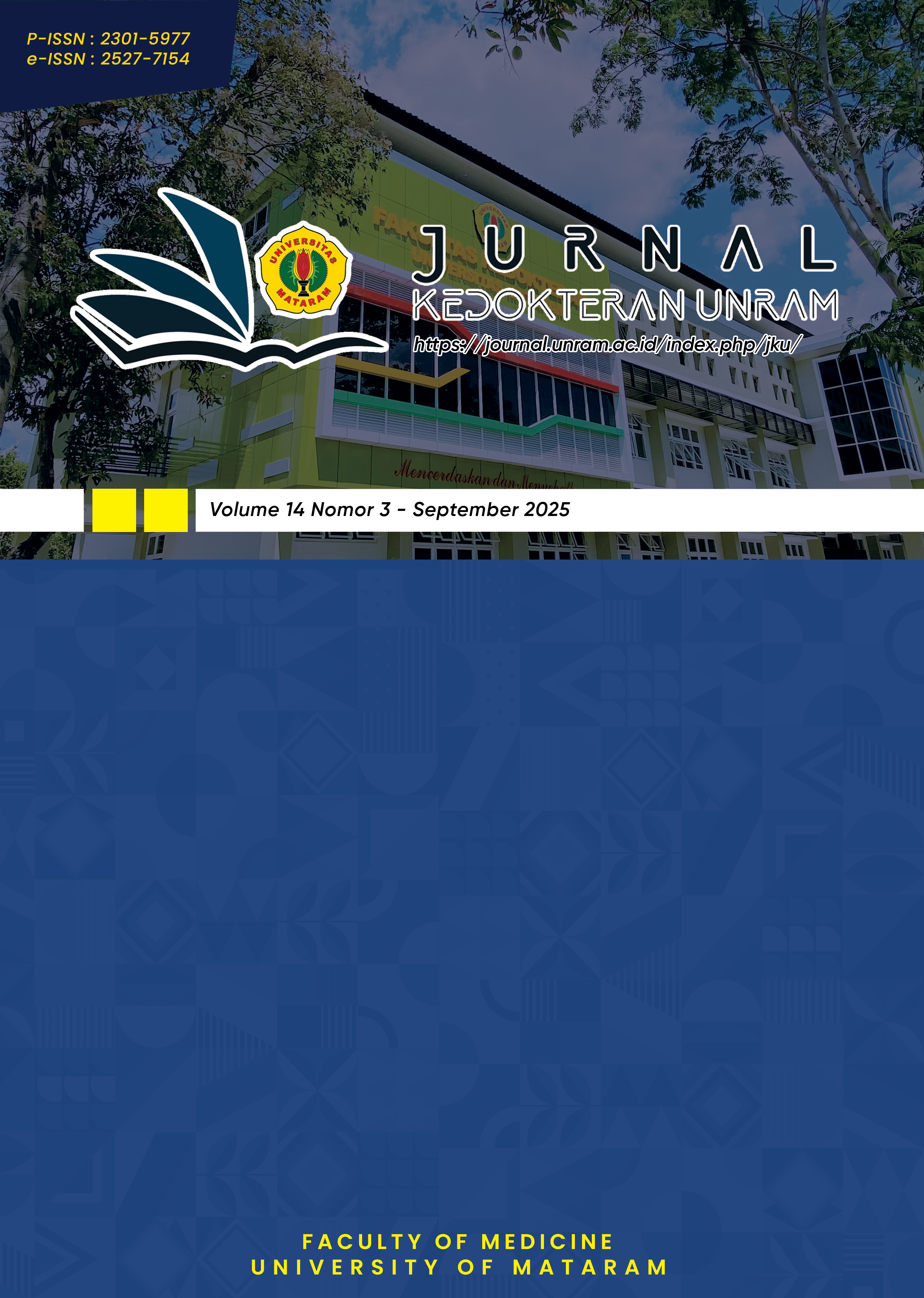Neurobiological, Psychosocial, and Digital Behavior Perspectives of Intermittent Explosive Disorder in Children and Adolescents: A Literature Review
DOI:
https://doi.org/10.29303/jk.v14i3.7524Keywords:
Intermittent Explosive Disorder, Aggression, Gadget Addiction, Adolescents, Neurobiological FactorsAbstract
Intermittent Explosive Disorder (IED) is a psychological disorder characterized by repetitive and disproportionate outbursts of anger, accompanied by verbal and physical aggression. This disorder sometimes appears in children and adolescents with gadget addiction accompanied with emotional disturbances, and negatively affects long-term emotional, social, and neurobehavioral aspect. The etiology of IED is multifactorial, including biological factors such as dysregulation of the serotonin system, dysfunction of the prefrontal-amygdala circuit, as well as genetic predisposition, which interact with environmental factors such as negative parenting, childhood trauma, and socioeconomic stress. The diagnosis of IED according to the DSM-5 emphasizes the presence of spontaneous impulsive aggressive outbursts, does not correspond to the level of provocation, and interferes with the functioning of daily life. Research also shows a significant correlation between gadget addiction and increased aggressive behavior in children and adolescents, especially when accompanied by low ego-resilience and less supportive parenting. The treatment of IEDs requires a multidisciplinary approach, with pharmacological therapies such as fluoxetine and anticonvulsants, as well as psychological therapies such as Cognitive Behavioral Therapy (CBT) proving to be effective. An in-depth understanding of the neuropsychological factors and mechanisms of IEDs is essential in designing holistic and evidence-based prevention and treatment strategies.
Downloads
Published
Issue
Section
License
Copyright (c) 2025 Titi Pambudi Karuniawaty, Aurellia Wongso Prawiro, Hadil Hudati Awwari Rameci, I Gusti Ketut Artha Jaya Kusuma, Nadine Aisyah Sultan Firdaus

This work is licensed under a Creative Commons Attribution 4.0 International License.
Authors who publish with Unram Medical Journal, agree to the following terms:
- Authors retain copyright and grant the journal right of first publication with the work simultaneously licensed under a Creative Commons Attribution 4.0 International License (CC-BY License). This license allows authors to use all articles, data sets, graphics, and appendices in data mining applications, search engines, websites, blogs, and other platforms by providing an appropriate reference. The journal allows the author(s) to hold the copyright without restrictions and will retain publishing rights without restrictions.
- Authors are able to enter into separate, additional contractual arrangements for the non-exclusive distribution of the journal's published version of the work (e.g., post it to an institutional repository or publish it in a book), with an acknowledgment of its initial publication in University of Mataram's Journal of Medicine.
- Authors are permitted and encouraged to post their work online (e.g., in institutional repositories or on their website) prior to and during the submission process, as it can lead to productive exchanges, as well as earlier and greater citation of published work (See The Effect of Open Access).
- This journal is open access journal which means that all content is freely available without charge to users or / institution. Users are allowed to read, download, copy, distribute, print, search, or link to full text articles in this journal without asking prior permission from the publisher or author.







